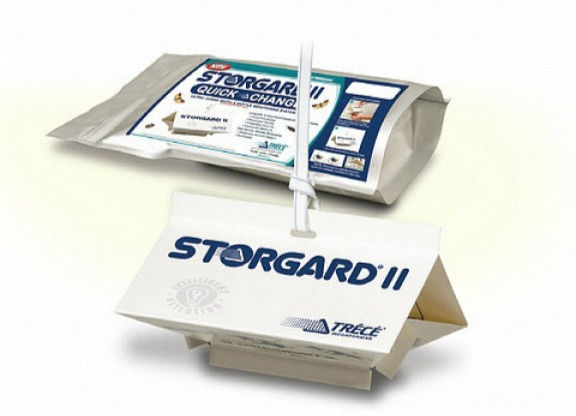Food Fun (AKA: What's eating at you?)
- Chelle Hartzer

- Aug 10, 2021
- 4 min read
I recently had some discussions on stored product pests. Those pests that are specifically after the food we eat. Not the rodents, flies, or cockroaches that take advantage of spilled food, but the flour beetles, meal moths, and warehouse beetles that are seeking out the products that we buy and use. The Indian meal moth is a cosmopolitan pest that I once heard referred to as the number one pest of retail stores and homes. I can’t find a reference on that but I believe it.


They really can be found almost anywhere there is a food supply. I’ve seen them everywhere from food processing facilities, grain bins, and distribution centers to retail stores, restaurants, and homes. I was in a US airport a few years ago and saw IMM flying around.
I once dealt with an infestation of Indian meal moth in a chocolate factory. By the time I was called in, it was a full infestation throughout the facility. How did it happen and how did it get that bad?
As I inspected, I talked to many of the employees there. I asked many people if they had seen the little moths and almost everyone said they had. They had been noticing them for more than six months. I asked who they reported that to and got lots of blank looks. “Who would we tell?” was the common response. Despite everyone on the floor knowing there was a problem, there was no reporting system in place for them to tell anyone.
There were no pheromone monitors in place. Monitoring is essential because these insects are small and the larvae are hiding in products and in food sources. Pheromone monitors are an early warning system to see when populations start up and pinpoint where those populations are starting so inspections and treatments can be focused. (Really can't stress enough the importance of monitoring!)
There was a lot of food waste. Let’s be real here for a minute: sanitation isn’t easy, particularly in a food processing site because you are processing food! How do you clean up all the food when that is what you are making?! In this case, sanitation did need to improve in many areas. While all the food couldn’t be clean up all the time, increased sanitation was able to limit the food source and thereby limit the population growth of the IMM.
This was an older facility and had windows and doors that were not sealed very well. Because the infestation was widespread throughout the entire site, it was impossible to tell where the infestation started. After a full facility fumigation, the site did seal up all the openings they could find to prevent any outside insects from coming in.

Just like sanitation is hard, inspecting incoming goods is hard too. It’s impossible to thoroughly go through every super sack and pallet of incoming raw ingredients. However, prior to this incident, they weren’t inspecting incoming shipments at all. An inspection process was put into place so a visual inspection of the outside of pallets and goods was completed for every incoming shipment. They did start finding insects on shipments that they traced back to a single supplier. They switched suppliers and eliminated that problem.
While the fumigation took care of the problem, it was an expensive treatment and the site was shut down from production for almost five days. Fumigations are great at knocking everything down, but there is no residual protection: anything can come in and get established as soon as the treatment is done. The monitoring system they installed was able to show that most areas had no issues, but issues did start to develop in a few parts of the site. Knowing that, they were able to focus on those areas, increase sanitation, and pinpoint treatments so it didn’t spread force another full shut down.

It's easy to say “clean up all the food” and “seal off the building” and “inspect all incoming goods”, but the reality is there will always be some food, doors need to open and close, and you can’t break down every pallet and open every box that is coming in. That doesn’t mean you can’t do a lot of sanitation, keep door seals in good order, and inspect the outside of incoming shipments. Pheromone monitoring systems help catch what those practices miss and are really important for stored product pests, especially Indian meal moths.
In this situation, if monitors were in place and checked, the infestations could have been kept in check. If employees knew what to look for and who to report it to, the problem could have been investigated earlier. IMM are super successful at reproducing quickly and infesting a huge number of products. It doesn’t matter if you are a food facility, warehouse, grocery store, or anywhere else that stores food, having a pest plan in place helps find issues early, keep them small, and manage them better and usually reduce costs.
Every facility is different and every IMM issue is going to need a slightly different approach. It is possible to mitigate the risk and reduce the impact of these destructive insects. Need help with a stored product pest problem? Give us a contact here!

Lagniappe - I didn't have time to talk about mating disruption and how cool and effective that technology is for IMM. Click here for more on that!









Ich weiß aus erster Hand, wie stressig es sein kann, eine Marketingfirma zu leiten, aber auch wie lohnend es sein kann. Ich empfehle Ihnen einen https://www.stevewaitt.com Artikel, der Ihnen hilft, sich zu entspannen und Ihre Fähigkeiten im Bereich Marketing zu verbessern.